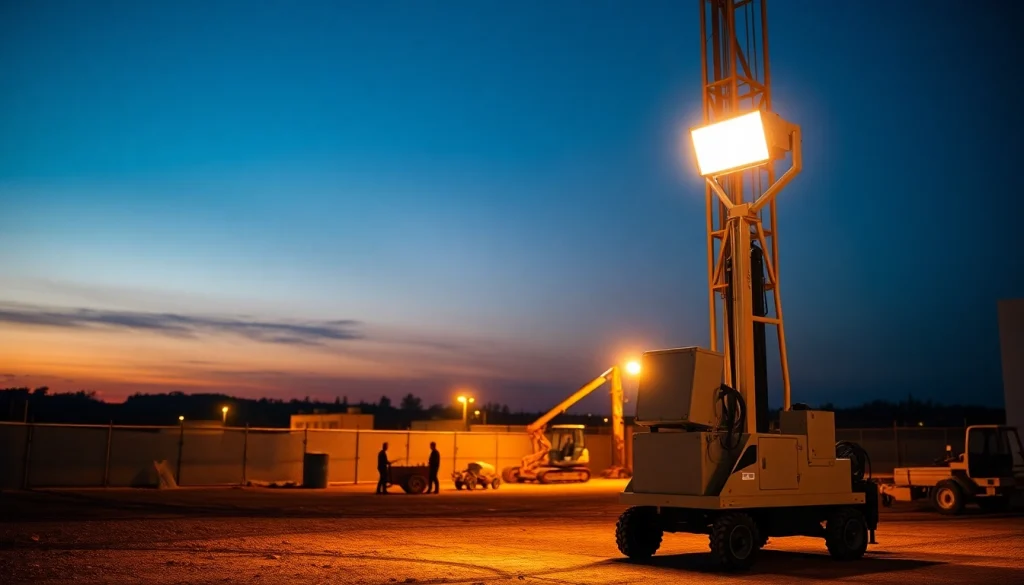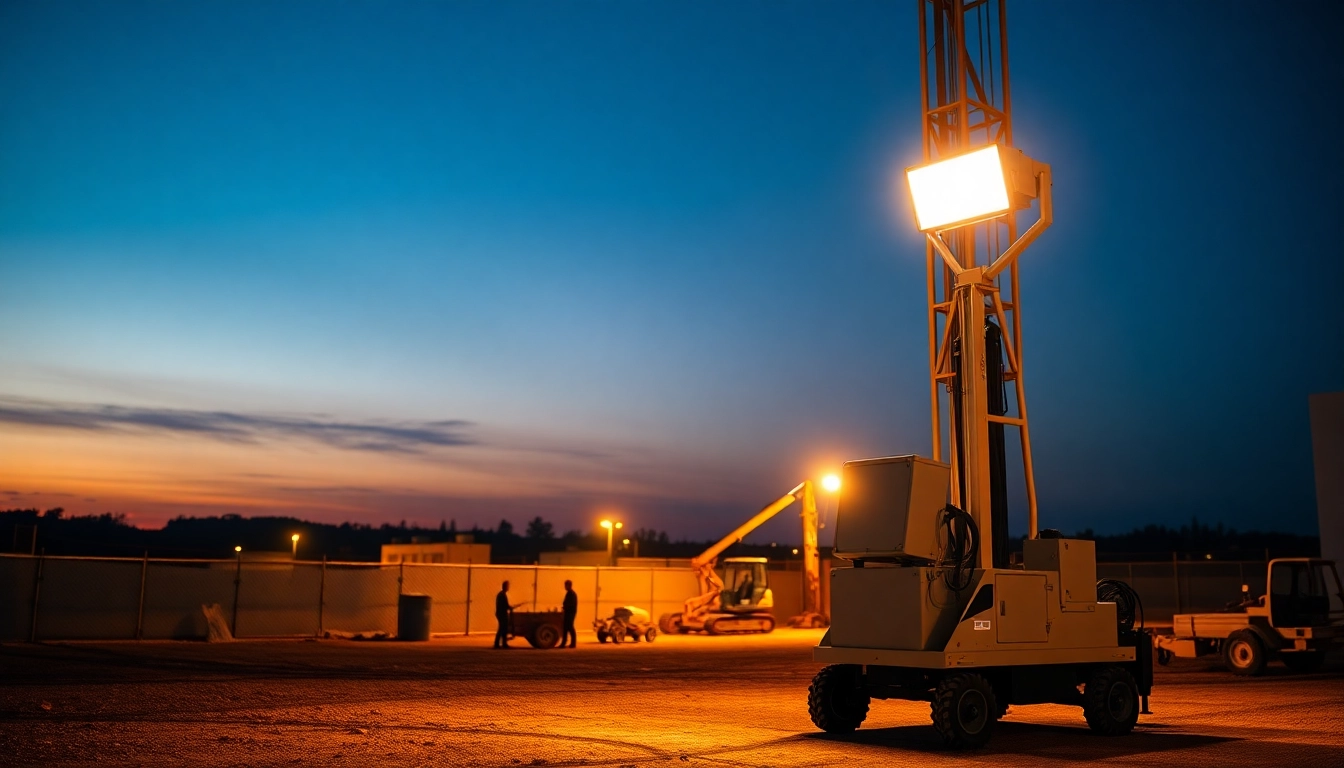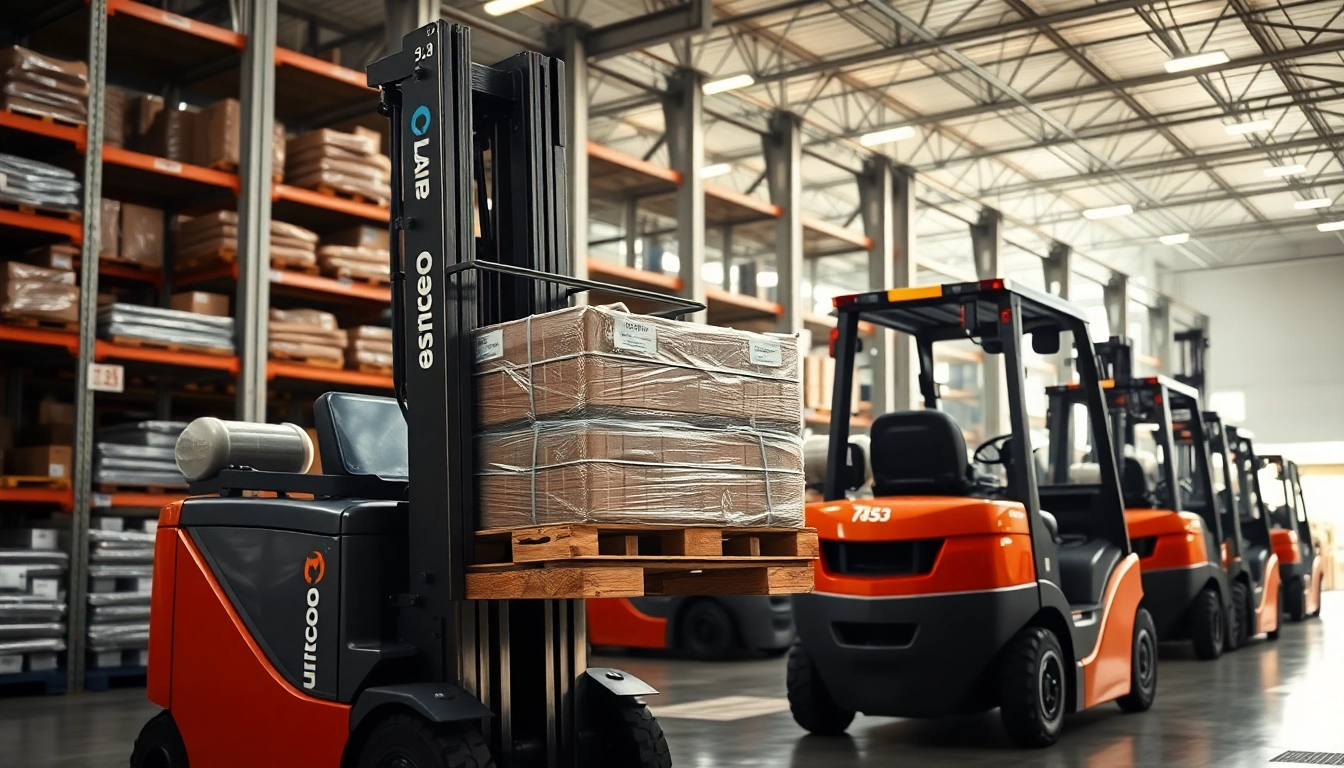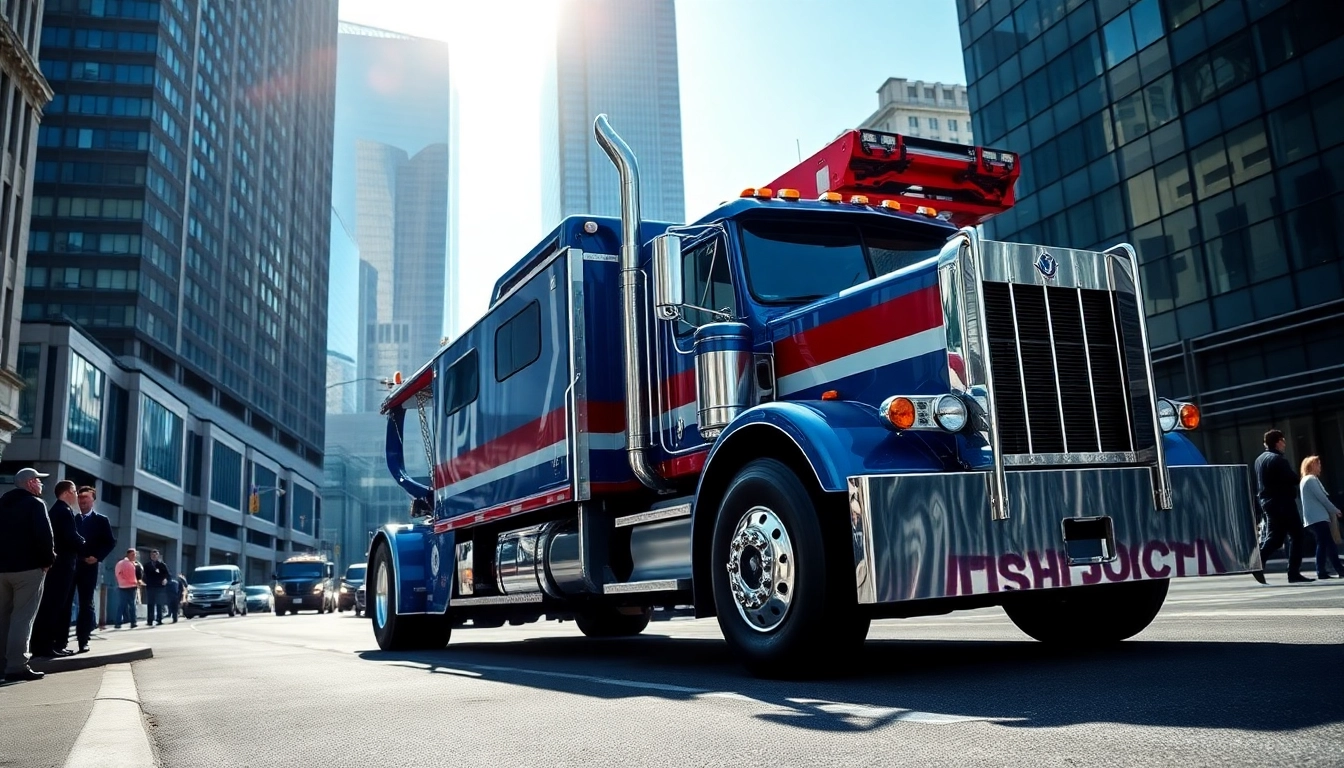
Introduction to Battery Light Towers
Battery light towers have emerged as a revolutionary solution for outdoor and indoor lighting needs, providing flexibility, portability, and reliability without the need for traditional power sources. These advanced lighting units are ideal for a variety of applications ranging from construction sites to events, enhancing visibility and safety in low-light conditions. As the demand for eco-friendly and efficient lighting solutions increases, many are turning to battery light tower technology to meet their lighting requirements.
What is a Battery Light Tower?
A battery light tower is a mobile unit equipped with powerful LED lights powered by rechargeable battery systems. Unlike conventional light towers that typically run on diesel or gasoline generators, battery light towers utilize clean energy alternatives that not only reduce operating costs but also minimize environmental impact. They are designed to provide high-intensity lighting for extended periods, making them suitable for various work and event environments.
Key Benefits of Using Battery Light Towers
- Environmental Impact: Battery light towers produce zero emissions during operation, making them an eco-friendly choice for organizations aiming to reduce their carbon footprint.
- Portability: Most models are designed to be easily transported, allowing for quick deployment in multiple locations, which is especially useful for temporary job sites or outdoor events.
- Cost-Effectiveness: With reduced fuel costs and fewer maintenance requirements, battery light towers can lead to significant savings over time.
- High Performance: These units typically provide bright, consistent lighting with minimal flicker, thanks to advanced LED technology, enhancing visibility and safety in dark environments.
- Quiet Operation: Battery-powered units operate quietly, ensuring minimal disruption during operation—an important factor for nighttime work or events.
Common Applications of Battery Light Towers
Battery light towers are versatile and find applications across a range of industries:
- Construction Sites: Providing essential lighting for work areas, particularly during night shifts.
- Outdoor Events: Enhancing visibility for concerts, festivals, and sporting events.
- Emergency Services: Assisting in rescue operations, firefighting, and disaster relief, where reliable lighting is critical.
- Film and Photography: Offering controlled lighting conditions for shoots in low-light scenarios.
- Roadside Assistance: Ensuring safety and visibility for service providers working on highways or in low-visibility conditions.
How Battery Light Towers Work
Understanding Power Sources and Efficiency
The core of a battery light tower is its power source, which typically consists of lithium-ion batteries that offer a high energy density. These batteries can power the LED lights for several hours, depending on the model and usage conditions. Efficiency is critical, as the effectiveness of the lights and the duration of operation rely heavily on how well the energy is utilized and stored. Advanced battery management systems are often integrated for optimal performance, monitoring battery health and ensuring safe charging cycles.
LED Technology in Lighting Towers
At the heart of battery light towers is LED (Light Emitting Diode) technology. LED lights are known for their durability and energy efficiency compared to traditional incandescent or fluorescent lights. They consume less power while providing greater illumination (measured in lumens). Furthermore, LED lights have a longer lifespan, which translates to lower replacement costs over time. The ability to adjust the brightness levels is also a noteworthy feature in many battery light towers, catering to different lighting needs.
Comparing Battery Light Towers with Traditional Options
When assessing the advantages of battery light towers against traditional generator-powered towers, several factors come into play:
- Fuel Efficiency: Battery towers eliminate the need for fuel, which can save costs significantly, especially in extended use scenarios.
- Operational Clarity: Unlike traditional options that can be noisy due to running engines, battery-powered units provide a quiet operation that doesn’t disturb ongoing activities.
- Mobility: Battery light towers are generally lighter and easier to transport, benefiting industries that require rapid deployment.
- Safety Considerations: With no risk of spills or hazardous gas emissions, battery light towers present a safer alternative for operators and the environment.
Features to Consider When Choosing a Battery Light Tower
Brightness Levels and Lumen Output
Brightness is a paramount consideration when selecting a battery light tower. The lumen output indicates how much visible light the tower can produce. A higher lumen count means a brighter light, which is essential for tasks requiring illumination over a larger area. Depending on your specific needs, you might require different brightness levels, from 10,000 lumens for smaller jobs to over 100,000 lumens for large-scale operations.
Battery Life and Charging Options
Understanding the battery life and charging capabilities of a light tower is crucial. Look for units that offer fast charging options, allowing you to minimize downtime. Many modern light towers come equipped with smart charging systems that only replenish the actual energy used, prolonging the battery’s lifespan. Always consider the typical run time required for your application—some units run for over 24 hours on a single charge, making them ideal for extended jobs.
Portability and Design Considerations
When evaluating portability, factors such as weight, size, and ease of setup are significant. Look for features like retractable masts, manageable weight, and built-in wheels for transportation flexibility. Moreover, durable construction is essential, especially for outdoor applications, to withstand various weather conditions without compromising functionality.
Maintenance and Care for Optimal Performance
Cleaning and Upkeep
Routine maintenance not only extends the lifespan of the battery light tower but also ensures it operates at peak performance. Regularly clean the LED lights and the exterior of the unit to remove dust, mud, or debris that might obstruct light output. Most manufacturers provide guidelines on recommended cleaning agents and methods to avoid damage.
Battery Management and Lifespan Tips
Proper battery management is crucial for maximizing battery life. Store units in a cool, dry place and avoid exposing them to extreme temperatures. Use a smart charger to manage charging cycles effectively, and try to keep the battery charged to around 50% during long storage periods. Regularly test the battery health to catch potential issues early.
Common Issues and Troubleshooting
Familiarizing yourself with common issues such as flickering lights, short battery life, or failure to operate can save time and resources. Often, these issues stem from a lack of battery maintenance or improper handling. Consult the manufacturer’s troubleshooting manual for specific solutions tailored to your model, and consider professional servicing if problems persist.
The Future of Battery Light Towers
Innovative Technologies on the Horizon
The future of battery light towers is promising, with numerous innovations anticipated. Advances in battery technology, including the development of solid-state and graphene batteries, promise longer run times, faster charging, and improved safety features. Enhanced LED technologies that produce brighter light with less energy will also drive greater adoption in various sectors.
Impact on Industries and Safety Standards
As battery light towers become increasingly mainstream, their influence on industry standards and safety regulations will likely grow. Enhanced visibility is critical in sectors like construction, mining, and event management, leading to improved safety practices and standards. Regulatory bodies may implement new requirements for lighting equipment to ensure better safety compliance.
Case Studies and Success Stories
Various organizations have successfully integrated battery light towers into their operations, yielding significant benefits. For instance, a construction company using battery-operated light towers reported a 50% reduction in lighting costs compared to traditional generators, alongside a notable decrease in noise complaints from surrounding neighborhoods. Such success stories underscore the potential for battery light towers to transform lighting practices across various industries.













Leave a Reply